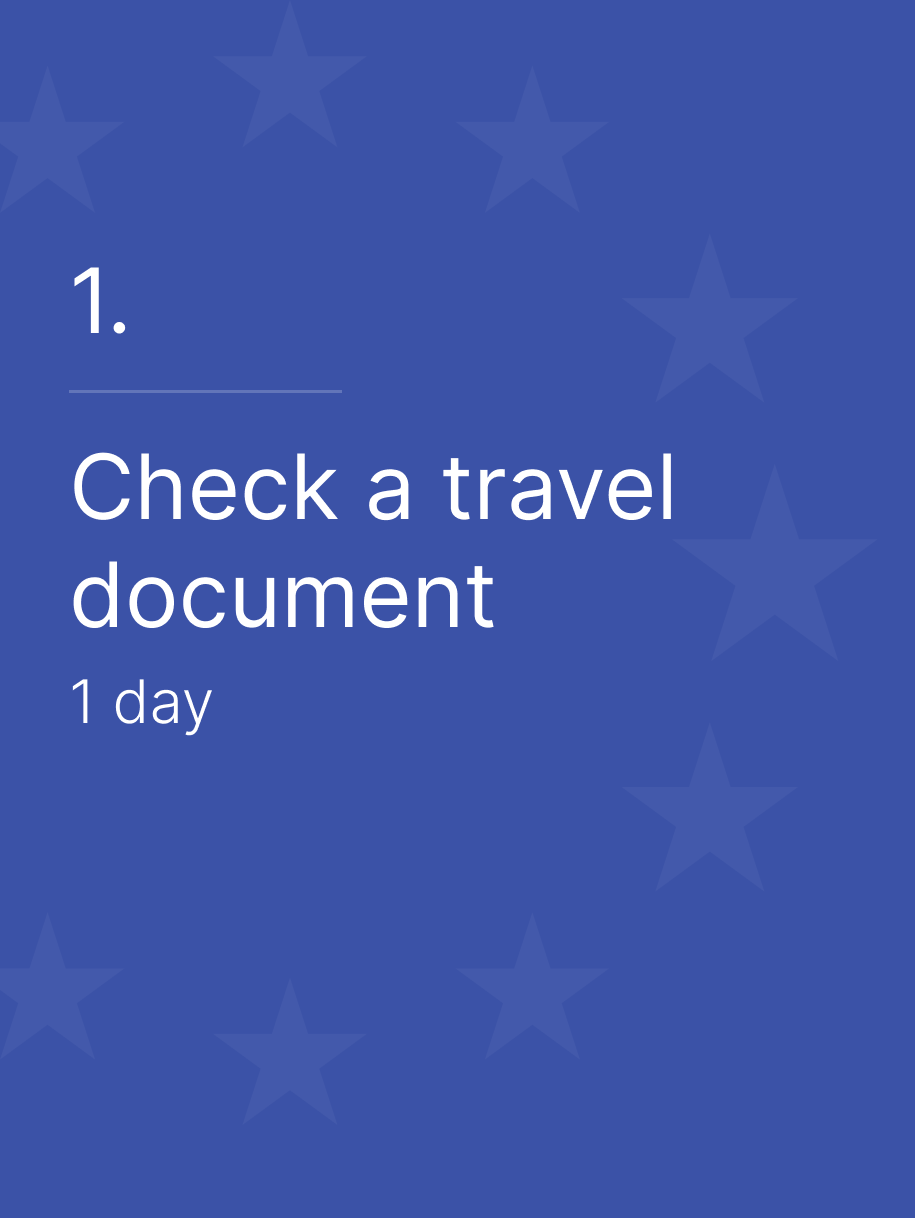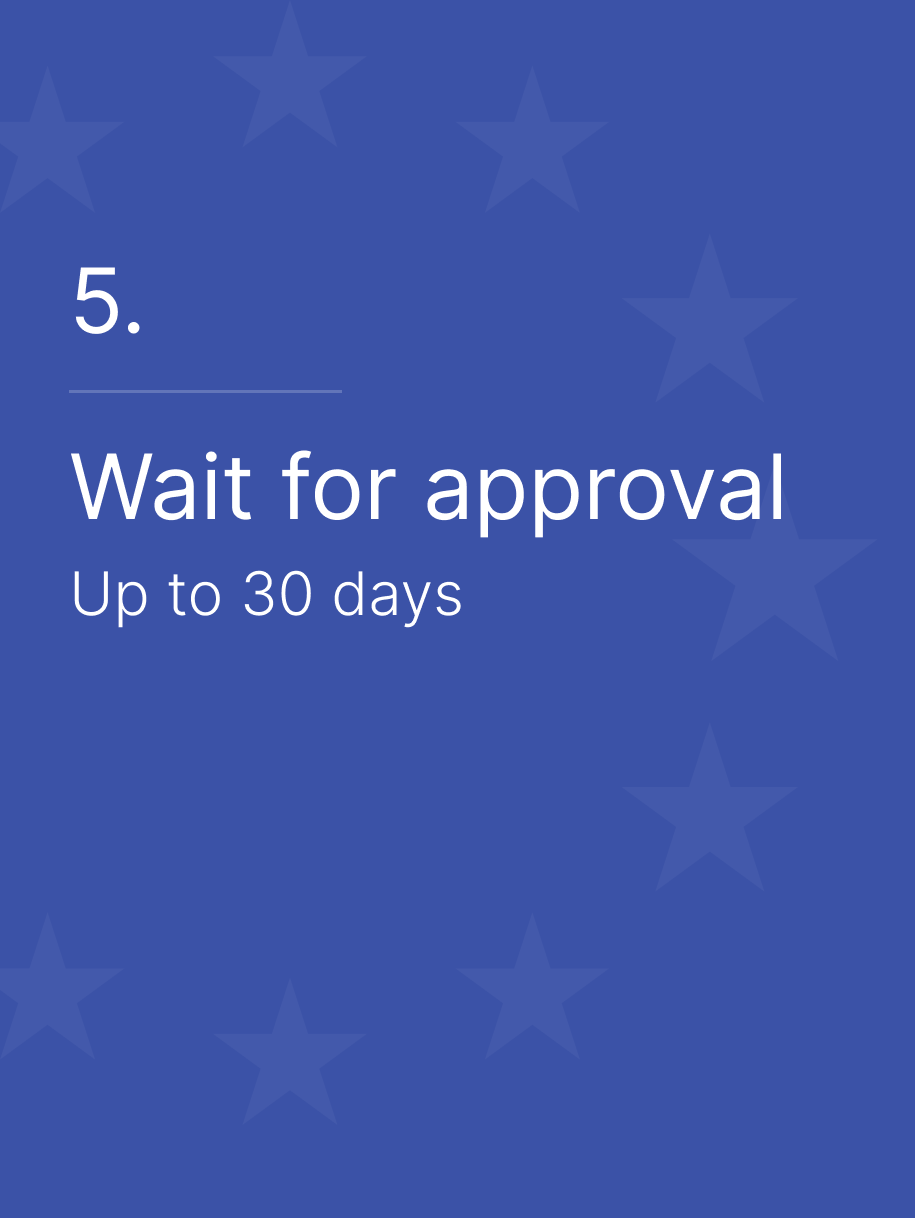Содержание Show
In 2025, the European Union plans to implement an ETIAS, a European Travel Information and Authorisation System, similar to the US ESTA system, which facilitates travel authorization for visa-exempt visitors.
Under the new rules, citizens of countries with a Schengen visa waiver will be required to obtain a travel authorization before entering the Schengen Area. Since the USA is one of those countries, Americans will also be required to register in the ETIAS.
Let’s take a closer look at the specifics of the new European travel authorization.
Do Americans need a visa to travel to the Schengen Area?
The Schengen Area comprises 29 countries, and Americans do not need visas to travel to any of them. They can enter the Area with just their international passport, which is presented at the border upon arrival. The passport must have two blank pages for entry and departure stamps and be valid for 3 to 6 months after the planned date of departure.
When entering Europe, travelers should also be prepared to explain the purpose of their trip and provide proof of sufficient financial resources for the visit. The maximum sum one can enter or exit the Schengen Area without declaration is €10,000, or its equivalent. Larger sums must be declared at the customs.
Starting in 2025, Americans won’t be able to travel to Europe with their passports only; they will need an ETIAS travel authorization to be admitted to any Schengen member state.
What is ETIAS, and which countries have it?
ETIAS is the European Travel Information and Authorisation System that issues authorizations for entering the Schengen Area. The main reasons for implementing ETIAS are to enhance the security of the member countries and to timely identify any person who may compromise it.
The ETIAS authorization is valid for three years or until the expiration of the traveler’s passport, whichever comes first. During this period, a foreigner can enter the Schengen Area as frequently as needed, provided the maximum period of stay is not exceeded.
The travel authorization allows for short stays of up to 90 days within any six-month period and does not guarantee entry. Border control officials make the final decision on whether or not to admit a traveler.
The ETIAS is issued to foreigners who:
- are not EU nationals;
- are citizens of countries that have a visa waiver agreement with the Schengen countries;
- do not have a residence permit issued by any of the Schengen countries.
The list of ETIAS countries
| Austria | Germany | Netherlands |
| Belgium | Greece | Norway |
| Bulgaria | Hungary | Poland |
| Croatia | Iceland | Portugal |
| Cyprus | Italy | Romania |
| Czech Republic | Latvia | Slovakia |
| Denmark | Liechtenstein | Slovenia |
| Estonia | Lithuania | Spain |
| Finland | Luxembourg | Sweden |
| France | Malta | Switzerland |
How to apply for the ETIAS: a step-by-step process
The process of obtaining the ETIAS travel authorization is completely remote and can take as little as one day.
Each application covers one traveler, meaning family members cannot be added. However, it is possible to apply on behalf of another person. To do so, two parties sign a declaration of the representation. The person applying provides their personal data alongside the data of their representee, and states the relationships between them.
-
1 dayCheck a travel document
When applying for the ETIAS, one submits a scan of their passport and provides personal information.
The passport must be valid for at least 3 months beyond the planned date of departure and not be older than 10 years at the moment of an application.
-
1 dayFill out an application
The information the applicant must provide is as follows:
- personal data such as name, surname, date and place of birth, nationality, home address, parents’ first names, e-mail address, and phone number;
- passport data;
- education and current occupation;
- details about the trip;
- details about criminal convictions, previous travel to war or conflict zones, or deportations.
-
1 dayPay an application fee
The ETIAS application fee is €7. Individuals under 18 and over 75 are exempt, as are family members of both EU citizens and non-EU nationals having the right to move freely throughout the EU.
-
1 daySubmit the application
The application is submitted online via the official ETIAS website.
-
Up to 30 daysWait for approval
ETIAS applications are typically processed within minutes, but can take up to 4 days. The processing time can be extended:
- up to 14 days — if the person is required to provide additional documents or information;
- up to 30 days — if the person is invited to an interview.
The decision on the application is sent via email.
What to do if an ETIAS application is rejected?
A travel authorization application can be refused if the applicant:
- uses a passport that has been reported lost, stolen, misappropriated, or invalidated;
- is assessed to pose a security, illegal immigration, or high epidemic risk;
- does not provide the requested additional information or documentation within the given deadline;
- does not attend an interview, if required;
- has previously been refused entry and stay, accompanied by an alert in the relevant information system.
The rejection and reasoning behind it are communicated to the applicant via email. One has the right to appeal the decision. The information on how to proceed with an appeal is provided in the email.
How to update information in the ETIAS or apply for a new travel authorization?
The ETIAS is linked to the person’s passport; therefore, the information in the system must match the document presented at the border. In case of any discrepancy, the person can be denied entry to the country.
If a traveler changes their name, surname, gender, or other personal data, or if they obtain a new passport, they must apply for a new ETIAS. The same rule applies if there are significant changes in their personal circumstances or travel history that might affect their eligibility under ETIAS regulations.
The ETIAS travel authorization is valid for three years and can be renewed after that. When the authorization is close to expiration, its holder gets a corresponding notification by email. The application for renewing the ETIAS is the same as the initial one and can be filed 120 days before the expiration of the existing authorization.
5 ETIAS benefits for American travelers
1. Long validity period. Upon issuance, an ETIAS authorization remains valid for three years, affording the flexibility to embark on multiple trips to Europe without the need for reapplication.
2. Multi-entry access. The ETIAS permits multiple short stays of up to 90 days within any 180-day period in multiple European countries using a single authorization.
3. Efficient procedure. The ETIAS application process prioritizes efficiency, with the majority of applications being swiftly processed and approved within minutes.
4. Electronic management. Following approval, the ETIAS authorization is electronically linked to one’s passport. This digital management eliminates the need for hard copies, streamlining travel documentation.
5. Safety during trips. By pre-screening individuals, ETIAS enhances security for travelers, contributing to a safer travel environment within Europe.

Key takeaways
- Starting in mid-2025, Americans will be required to get an ETIAS travel authorization to visit the Schengen Area.
- The authorization allows US citizens to enter the Schengen countries as frequently as they want and stay there for up to 90 out of 180 days.
- The application for the ETIAS is submitted online and is processed within 4 days. In some cases, the processing time can be extended.
- Upon applying, Americans must provide their passport and personal information and pay a fee.
- The ETIAS is valid for 3 years and can be renewed as many times as needed.
Frequently asked questions
Do Americans need a visa for the EU or Schengen?
No, Americans can enter the EU and Schengen countries without visas. However, when the ETIAS comes into force in 2025, they will be required to obtain an ETIAS travel authorization prior to visiting the Schengen Area.
What is an ETIAS visa?
An ETIAS visa is a travel authorization that, when granted, allows a non-Schengen national to enter the Area and remain there for a short period of 90 days out of 180.
Who needs an ETIAS?
Foreigners are required to get an ETIAS if they:
- are not EU nationals;
- are citizens of countries that have visa waiver with the European countries requiring ETIAS;
- do not have a residence permit issued by any of the Schengen Area countries.
US citizens must get an ETIAS travel authorization.
How to apply for an ETIAS visa?
To apply for an ETIAS, one must submit a passport, provide personal data, and pay a fee. The application is filed on the ETIAS official website and is usually processed within 96 hours.
Is ETIAS available now?
No, the ETIAS implementation was postponed to 2025, so the Schengen Area authorities are not accepting applications at the moment.
When does ETIAS go into effect?
ETIAS is expected to come into effect in the middle of 2025. We recommend checking news and up-to-date information on the ETIAS official website.
How much does ETIAS cost?
Applicants must only pay an application fee of €7. There are no additional expenses.
Persons under 18 and over 75 are exempt from paying the fee. Family members of both EU citizens and non-EU nationals having the right to move freely throughout the EU don’t pay the fee as well.
How long will ETIAS last?
ETIAS is valid for 3 years. It can be renewed for the same period an unlimited number of times.
Is ETIAS free?
No, there is an application fee of €7. Some people are exempt from paying it. These are:
- persons under 18 and over 75;
- family members of EU citizens;
- family members of non-EU nationals who have the right to move freely throughout the European Union.
Will ETIAS replace the Schengen visa?
No, ETIAS is required for citizens of countries with a Schengen visa waiver. Travelers from countries that don’t have a visa-free regime with the Area will still have to obtain a Schengen visa.
What questions will ETIAS ask?
Upon applying for the ETIAS, the traveler must provide the following information:
- personal data such as name, surname, date and place of birth, nationality, home address, parents’ first names, e-mail address, and phone number;
- passport data;
- education and current occupation;
- details about the trip;
- details about criminal convictions, previous travel to war or conflict zones, or deportations.









